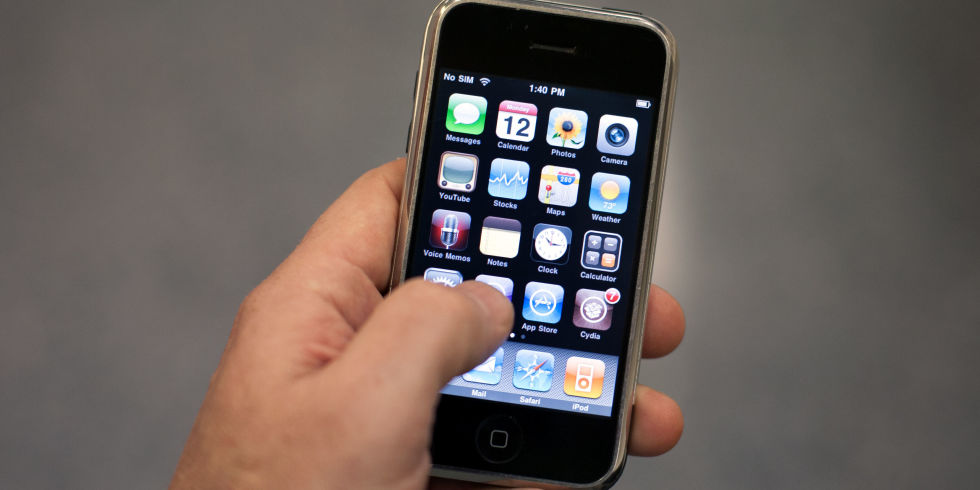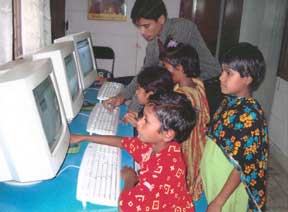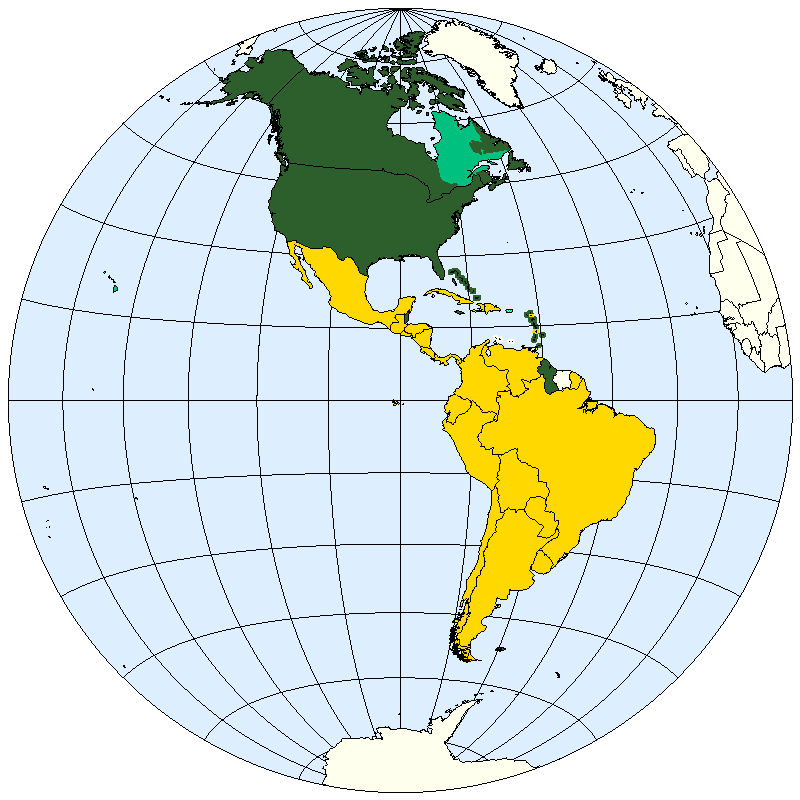First-Generation iPhone, 2007. Image from Popular Mechanics

Focus Question:
How have changes in technology, science, population and family life transformed late 20th Century and early 21st Century American society?
Topics on the Page
The computer and technological revolution of the 1980s and 1990s (and beyond)
Scientific and medical discoveries
Major immigration and demographic changes such as the rise in Asian and Hispanic immigration (both legal and illegal)
The weakening of the nuclear family and the rise in divorce rate
Gay rights in the Late Twentieth Century
 Cross-Link: AP US History Key Concept 9.2: 21st Century Technological, Demographic and Economic Changes
Cross-Link: AP US History Key Concept 9.2: 21st Century Technological, Demographic and Economic Changes
 Cross-Link: Global Contemporary
Cross-Link: Global Contemporary
The Computer and Technological Revolution of the 1980s and 1990s (and Beyond)
- For more on the ongoing computer revolution in schools and society, see our companion wiki,
For more on the growth of the Internet, see the
Getting to Know Gen Z: Exploring Middle and High Schoolers' Expectations for Higher Education, Barnes & Noble College
 |
| Children using computers, 2008. Picture by David Shankbone |
- Generation M2: Media in the Lives of 8- to 18-Year-Olds, a 2010 report from the Kaiser Family Foundation documents that teens and tweens average 7 hours and 38 minutes (7:38) using entertainment media (computers, video games, music players) in a typical day.
- Media multitasking (experiencing more than one media at a time) means youngsters experience 10 hours and 45 minutes (10:45) of media time during a day.
- Inventor of the Week from Invention Dimension profiles scientists and inventors whose ideas have changed technology and society. Search the archives for hundreds of modern-day and historical inventors from the Lemelson-MIT Program at the Massachusetts Institute of Technology.
- Timeline of computer history from 1930-1994.
 These 6 Women Got Written Out of Tech History. They're Finally Being Recognized. Upworthy.com (February 22, 2016)
These 6 Women Got Written Out of Tech History. They're Finally Being Recognized. Upworthy.com (February 22, 2016)
State of the Internet Live provides an interactive graphical look at the immense size and impact of this world wide network that in July 2011 had 1.97 billion users and 266 million websites.
 |
| Firxefox 3 Downloads on a Single Day, July 2, 2008. Dark Red equals 500,000 or more) |
 |
| Children Using Computers, Bangladesh |
For more see the online exhibits at the Tech Museum of Innovation in San Jose, California.
Disruptive Innovations
 Disrupting class: How disruptive innovation will change the way the world learns by Clayton M. Christensen, Michael B. Horn, and Curtis W. Johnson (McGraw-Hill, 2008) looks at how interactive technologies can serve as disruptive innovations in schools, transforming how teachers teach and students learn.
Disrupting class: How disruptive innovation will change the way the world learns by Clayton M. Christensen, Michael B. Horn, and Curtis W. Johnson (McGraw-Hill, 2008) looks at how interactive technologies can serve as disruptive innovations in schools, transforming how teachers teach and students learn.
- In disruptive innovation theory, there are two interconnected factors: the pace of technological improvement and the use of technology by consumers. Many technological improvements are "industry-sustaining innovations," that serve to maintain existing relationships and firms such as computers that process information more rapidly or television sets that show clearer and clearer images.
- "Disruptive innovations" offer a product or service that is not as good as the that which companies are already selling." As a result, it "extends its benefits to people who, for one reason or another, are unable to consume the original product" (Disrupting Class: Student-Centric Education in the Future, on Cue Magazine (Winter 2010, p. 2).
- Such innovations are often less expensive and easier to use, but gradually over time they improve their capacities to handle more complex problems, thereby taking over and replacing older ways to doing business.
- Online learning is an example of this process in education, where gradually teachers and students will be able to create their own learning materials from web-based sources.
Computers at work
This era is sometimes called the Modern or Post-Modern Industrial Revolution.
- Businesses experienced a decrease in operating costs.
- Wages grew at a slower rate than in the 1960s and 1970s. Businesses had excess capacity.
- There was a need for downsizing operations and casting off extraneous subsidiaries. Some analysts feel that business will be reacting to these changes for decades to come as they affect the many levels of the world economy.
Computers at home
- Beginning in the 1980s, but skyrocketing through the 1990s, Americans found ever-increasing desire to have computers in their homes.
- These machines, which became smaller and more affordable every year, were designed to perform bookkeeping, word processing, and a wide range of creative and entertainment functions. Click here for more information about the growth of home computing in the 1980s.
- In the late 1980s, students were still bringing electric typewriters with them to college.
- By 1994, they were bringing computers. The machines continued to develop, first the the primary focus was creating documents, but in just a few years, we would be making movies and printing photos, too.
- In the 1990s, the World Wide Web began to link personal computers to a nearly infinite array of consumer, entertainment, and information sources.

See interview:
Interview with Bill Gates
New Frontiers in Technology
Artificial intelligence had advanced by the year 2000 to where a computer could defeat the World Chess Champion and robots could operate on voice recognition programs and display simulated emotion through facial gestures.
Virtual Reality- a technology which grew out of flight simulator models for pilot training became useful not only for video game entertainment but also for medical applications such as doctors being able to take a “virtual tour” of a patient’s lungs or perform long-distance surgery through the use of robotic arms.
See a link to the preview of the Social Network
( a movie about the founding of Facebook)
Scientific And Medical Discoveries since the 1980s
Robot dispenses medication, Naval Medical Center, Bethesda, MD, 2003

Women in Medicine Timeline from the American Medical Association.
Click here for the NRP article on the book The Innovators, which shares hidden histories of the first female coders.
Magnetic Resonance Imaging (MRI) was increasingly used to create cross section images of any part of the body which is a valuable diagnostic tool.
DNA evidence increasingly came into use to establish a defendant’s guilt or innocence in legal cases.
The Human Genome Project- a map of the 3 billion “letters” in the human genetic code was completed in about a decade during the 90s, and holds great potential for the tracking and combating of hereditary disease and congenital disorders.
The vast expansion in DNA research during the 1990s has allowed geneticists to contribute greatly to what once solely the realm of archaeologists and anthropologists: the prehistorical migrations of human beings. Genetic markers found in Mitochondrial DNA have been used to confirm and broaden previously understood ideas about human migration out of Central Africa hundreds of thousands of years ago.
Genetic Engineering (changing the biology of an organism’s cells) was used with greater frequency especially with regard to foods which drew mixed public reaction.
Gene therapy and genetically engineered antibodies were used with success to combat cancer.
The fight against AIDS made huge leaps forward as drug therapies were successful at extending the average lifespan of patients diagnosed with HIV. Work on seeking a vaccine to prevent AIDS continues.
See the The 50 Most Important Women in Science to learn about women's contribution to the scientific discoveries
 Starting with the Egyptian Imhotep, the following link is a timeline of major medical discoveries throughout history.
Starting with the Egyptian Imhotep, the following link is a timeline of major medical discoveries throughout history.
Here is a primary source from the New York Times from 1989. This article describes the first ever living donor liver transplant, a very big deal in the field of medical innovation.
Immigration and demographic changes
Largest U.S. Immigrant Groups Over Time, 1960 to 2013 from Migration Policy Institute.
 |
| U. S. Immigration and Customs Enforcement Aircraft |
The New Americans from PBS provides information about recent immigrants to the United States, including an interactive quiz for students about immigration facts and realities.
For more information on the Clinton era and it's impact on undocumented immigrant law, check out The Washington Post's "Angry That ICE Is Ripping Families Apart? Don't Just Blame Trump. Blame Clinton, Bush and Obama Too."
And also Hacking Law Practice's article, "20 Year Old Immigration Law Signed By Clinton Continues To Harm Immigrants."
The Roots of Our Immigration Crisis
 See also Latino Americans from PBS with a large collection of videos about Latino history, past and present.
See also Latino Americans from PBS with a large collection of videos about Latino history, past and present.
Click here for a debate on the illegal immigration situation from the PBS show NOW.
Click here for a visual display of recent immigration trendsbased on the 20 most popular countries of origin for immigrants in 2008.
Click here for more information on what President Barrack Obama and the White House plan on doing with immigration in the U.S.
For more information on DACA, and Dreamers speaking in their own words about the end of DACA, check out this video here.
"LGBT Dreamers Speak Out: 'It's Like Being Sent Home to a Death Sentence' - Broadly.

Made in L.A. is an engaging documentary about Latina immigrant sweatshop workers in Los Angeles fighting for workers' rights. The film brings up a number of key issues, including the presence of sweatshops in the United States and specific clothing retailers with histories of abusing garment workers, about which students may not have prior knowledge.
PBS hosts a companion website with sample lesson plans, discussion questions, a list of "immigration myths and realities" and extended interviews with the women whose stories are portrayed in the film.
- In 2001, more than 2000 legal and 4,000-10,000 illegal immigrants entered the U.S. daily with around 4,000 people being sent back to their home countries each day. Since the 1960s, 45% of U.S. immigrants have come from the Western hemisphere and another 30% from Asia.
- Faltering Latin American economies prompted significant migration, particularly from Mexico, as people seek a better life. Ironically, in 2008 as the U.S. economy worsens, there is a beginning trend towards immigrants retuning to their home countries, such as Brazilian people in the Boston region returning to Brazil.
- In 2001, California, the most populous state in the Union, became a majority-minority state, indicating the changing ethnic makeup of America.

Changing Patterns of Immigration
Ten Myths about Immigration: Updated 2017, from Teaching Tolerance Magazine
Click here for an overview of the history of immigration in the twentieth century.
In the 1990s immigration patterns changed in the United States.
- Recent entrants to nation began to settle in regions—the Southeast, the Midwest, and the Rocky Mountain States, in particular—that had not previously witnessed the high influx of entrants characteristic of the East and West Coasts.
- Some rural areas also began to experience an influx of new Americans at this time.
- Click here for more information.
Debates over Immigration Policy
 |
| May Day Immigration March, 2006. Posted by Jonathan McIntosh. |
1994 Florida Governor Lawton Chiles filed suit against the federal government for “its continuing failure to enforce or rationally administer its own immigration laws.”
California passed Proposition 187 in 1994, cutting education and health benefits for illegal immigrants but it was struck down as unconstitutional. This had the effect, however, of mobilizing Hispanic voters, who felt targeted by the law.
People who favor tighter immigration laws argue that illegal immigrants are law-breakers and that they take jobs and government benefits from legal Americans (thus increasing the tax burden for legal citizens).
Those who favor allowing more immigrants to stay in the U.S. (such programs are labeled “Amnesty” by their opponents) argue that it is impossible to arrest (by some estimates) 12 million illegal immigrants and that they often take less desirable jobs, bring new energy and ideas, and contribute to America’s history of diversity.
For an article written by an undocumented immigrant about what it is like to come out as undocumented, check out: Coming Out As An Undocumented Immigrant in the Age of Trump, by Broadly by VICE.
For an article on the politics of language, check out: In Immigration Debate, 'Undocumented' vs 'Illegal' is More Than Just Semantics, by NPR.
“The Weakening Of The Nuclear Family” and The Rise In Divorce Rates

It could be argued that the family is not being weakened in modern culture, but instead, the entire definition of “family” is being expanded and changed, as it has changed throughout history and across cultures. While it is accurate to say that the (nuclear) family structure of a married man and woman with children is not as common as it used to be in the United States, it remains up for debate whether or not this fact is a bad thing (as implied by “weakening”), or whether it is simply change. One could argue that the change in what a family is does not mean that families are now weaker; it only means that families are different than they used to be.
The very phrase “nuclear” brings to mind the classic nuclear symbol, of atoms revolving around a nucleus. The implication of this phrase is that the woman and the children revolve around the man. This image of a family is outmoded in modern western society.
This is not to say that divorce is good, in and of itself; it can be very hard on an entire family, and end up begetting more divorce, as children whose parents divorce are more likely to get divorced themselves. Divorce can, however, free people from a very unhappy situation, so it is not is it inherently bad.
For more in-depth information on the affects of divorce, read this Newsweek magazine article: The Divorce Generation Grows Up
There has been a steady rise in divorce rates in the United States since 1921, and rates saw a spike around the advent of “no-fault divorce” laws. Divorce prior to 1970 in California, and prior to 1983 most everywhere else was only possible through a long legal process in which one spouse had to prove the fault (usually, adultery) of the other to a court of law. This long process, combined with social and economic pressures for women to stay with men no matter what either of them did or felt, kept divorce rates low. No-fault divorce made it easier for couples to split. Spouses did not have to prove and wrong-doing, they simply had to say that they wanted out, possibly wrangle over possessions and child custody (or not), and the state government would consider the marriage over.
A report from the U.S. Census Bureau reads, in part:
“Divorce rates have increased since 1921 with the sharpest increases occurring from the mid-1960s to the late 1970s. These rates have not changed in the last ten years.”
The sharp increase corresponds with the greater prevalence of no-fault divorce laws in the states.
More modern attitudes towards women’s rights and gay rights do not show a corresponding increase in divorces. For example, there was a higher divorce rate in 1970, when the women’s and gay rights movements were in their infancy, than in 1990, when these movements had gained more traction. Also, while roughly half of all first marriages in the U.S. end in divorce, the majority of those people end up remarrying. So the “nuclear” family is not disappearing; it is being reformulated to reflect changing American attitudes and values.
Interestingly, recent trends in divorce rates show that millennials are divorcing at slower rates than baby boomers. For more on the decline of divorce rates in the United States, check out Esquire's piece: Oh Great, Millennials Are Killing Divorce Rates Now.
For more on how Familial changes looked during this time, take a look at this CSP Global article. There was a huge change in the idea of the "perfect American family" and what that represented.
Gay rights in the Late Twentieth Century
Cross link to another Wiki page covering some major court cases: http://resourcesforhistoryteachers.pbworks.com/w/page/125524232/LGBTQ%20Rights%20Court%20Cases
Click here for a timeline of LGBTQ history in the twentieth century.
 A teachers’ web site form Australia offers a classroom exercise to help students look at the varying shapes of families.
A teachers’ web site form Australia offers a classroom exercise to help students look at the varying shapes of families.
Click here for an interactive quiz that compares U.S. divorce rates to other countries throughout the world.
Click here for a chapter from JSTOR that goes in depth into Economic Trends of the twentieth Century.
Sources:
http://www.library.ca.gov/crb/98/04/
readings and stats on no-fault divorce from 1998.
http://www.gracecathedral.org/enrichment/forum/for_20010513.shtml
discussion of the question: What is a family? From an Episcopal cathedral in San Francisco
http://en.wikipedia.org/wiki/No-fault_divorce#endnote_gest
this is a good summary of the whole situation from a legal standpoint; I used this source specifically for the dates laws were passed.
Jensen, Michael C.,The Modern Industrial Revolution, Exit, and the Failure of Internal Control Systems The Journal of Finance, Vol. 48, No. 3, Papers and Proceedings of the Fifty-Third Annual Meeting of the American Finance Association: Anaheim, California January 5-7, 1993 (Jul., 1993), pp. 831-880.
Comments (0)
You don't have permission to comment on this page.